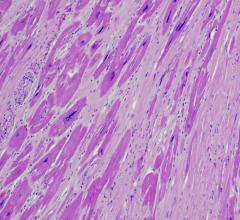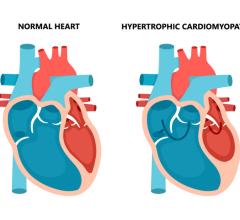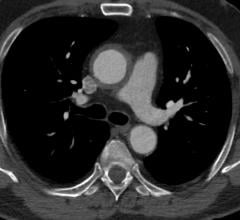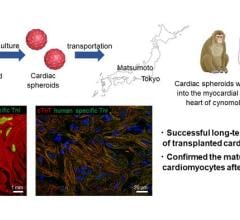
The Xience V stent
April 3, 2009 - Long-term data presented at ACC.09 from Abbott’s SPIRIT II clinical trial demonstrated the clinical advantages of the XIENCE V Everolimus-Eluting Coronary Stent continued to increase between two and three years compared to the TAXUS Express2 Paclitaxel-Eluting Coronary Stent / TAXUS Liberte Paclitaxel-Eluting Coronary
Stent (TAXUS).
Both TAXUS Express2 (73 percent of lesions) and TAXUS Liberte (27 percent of lesions) were used as controls in the SPIRIT II trial. The data also showed that patients treated with XIENCE V continue to experience fewer heart attacks, deaths or repeat procedures at the target lesion compared to patients treated with TAXUS out to three years. The results from the SPIRIT II trial were presented during the i2 Summit at the American College of Cardiology's 58th annual scientific session in Orlando, FL.
Between two and three years, Abbott's XIENCE V maintained a low cardiac death rate of 0.5 percent, while the observed cardiac death rate for TAXUS more than tripled during the same time period (1.3 percent at two years vs. 4.2 percent at three years). Similarly, XIENCE V maintained a low, single-digit rate of major adverse cardiac events (MACE) between two and three years (6.4 percent at two years vs. 6.4 percent at three years), while the observed MACE rate with TAXUS increased approximately 40 percent between two and three years (10.5 percent at two years vs. 14.9 percent at three years). MACE is an important composite clinical measure of safety and efficacy outcomes for patients, defined as cardiac death, heart attack (myocardial infarction or MI), or ischemia-driven target lesion revascularization (ID-TLR driven by lack of blood supply).
In addition, Abbott said the SPIRIT II results demonstrated that XIENCE V continues to
outperform TAXUS, with XIENCE V showing continued clinical benefits at three
years, including an 88 percent reduction in the risk of cardiac death and a 57
percent reduction in the risk of MACE.
"In the clinical outcomes that matter most, such as heart attack, repeat procedure
at the target lesion or death, XIENCE V demonstrated a consistent reduction
compared to TAXUS out to three years," said Patrick W. Serruys, M.D., Ph.D.,
professor of Interventional Cardiology at Thoraxcentre, Erasmus University
Hospital, Rotterdam, the Netherlands, and principal investigator of the SPIRIT II
clinical trial. "What's even more impressive is that the clinical differences between
XIENCE V and TAXUS continue to widen between two and three years,
confirming the long-term safety and efficacy of XIENCE V."
In the 300-patient SPIRIT II trial, XIENCE V demonstrated the following key results
at three years:
• An 88 percent reduction in the risk of cardiac death compared to TAXUS
(0.5 percent for XIENCE V vs. 4.2 percent for TAXUS, p-value=0.024).
• A 57 percent reduction in the risk of MACE compared to TAXUS (6.4
percent for XIENCE V vs. 14.9 percent for TAXUS, p-value=0.029).
• An observed 52 percent reduction in the risk of heart attacks (MI).
compared to TAXUS (3.3 percent for XIENCE V vs. 6.8 percent for
TAXUS, p-value=0.20).
• An observed 56 percent reduction in the risk of ID-TLR compared to
TAXUS (4.2 percent for XIENCE V vs. 9.4 percent for TAXUS, p-
value=0.092).
• No stent thrombosis between two and three years with XIENCE V, and a
low rate of stent thrombosis from zero to three years, per Academic
Research Consortium (ARC) definition of definite/probable stent
thrombosis (0.9 percent for XIENCE V and 2.8 percent for TAXUS, p-
value=0.27). The ARC definitions of stent thrombosis were developed to
eliminate variability in the definitions across various drug eluting stent
trials.
Abbott said XIENCE V has a 50 percent share in the U.S., and market-leading share around the world.
SPIRIT II is a prospective, multi-center, randomized, single-blind, controlled
clinical trial comparing XIENCE V to TAXUS in 300 patients (223 XIENCE V
patients, 77 TAXUS patients) with either one or two de novo native coronary artery
lesions. Patients from Europe, India and New Zealand were enrolled in the trial
between July 5, 2005, and Nov.15, 2005.
The primary endpoint of the SPIRIT II trial was in-stent late loss at six months,
wherein XIENCE V demonstrated superiority to TAXUS with a statistically
significant 69 percent reduction in late loss (mean, 0.11 mm for XIENCE V vs.
0.36 mm for TAXUS). In-stent late loss is a measure of vessel re-narrowing.
For more information: www.abbott.com, www.xiencev.com


 May 15, 2024
May 15, 2024 








